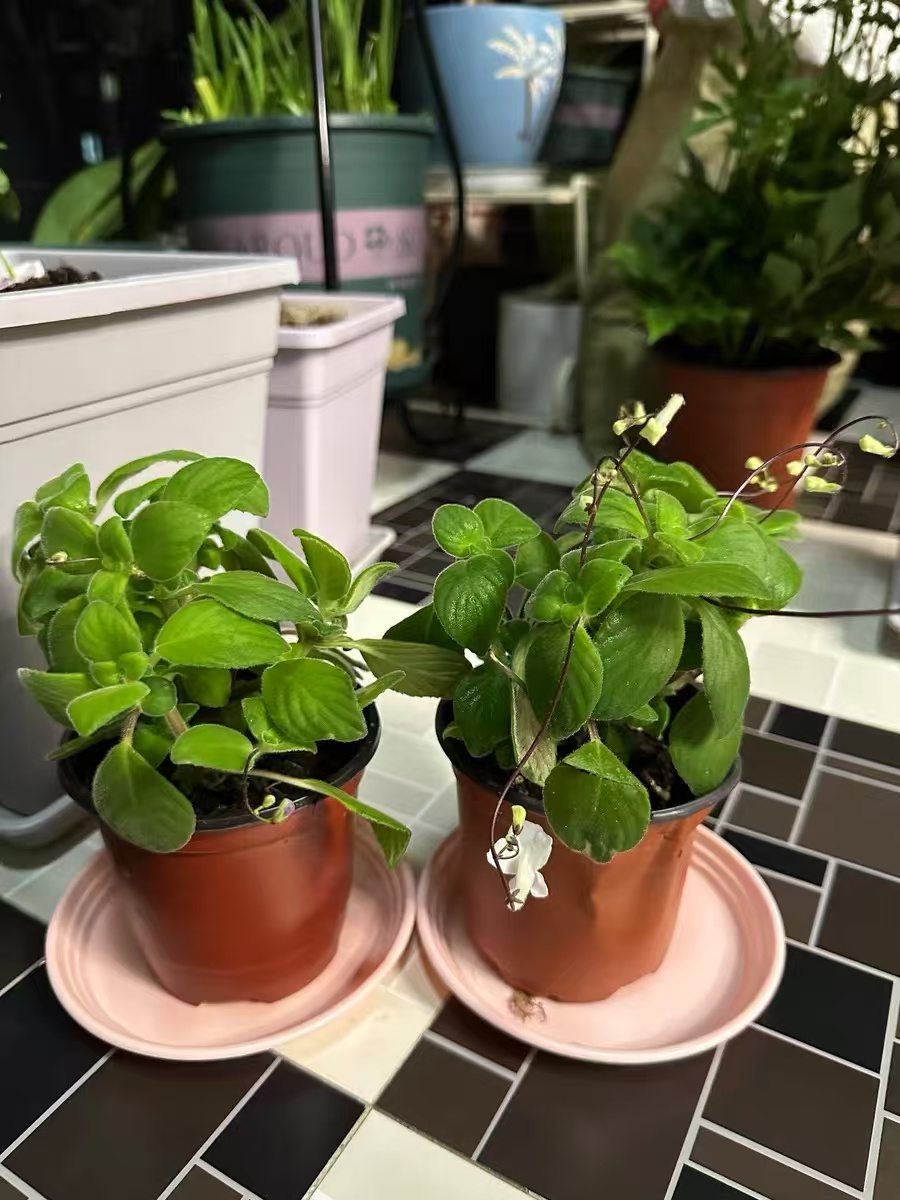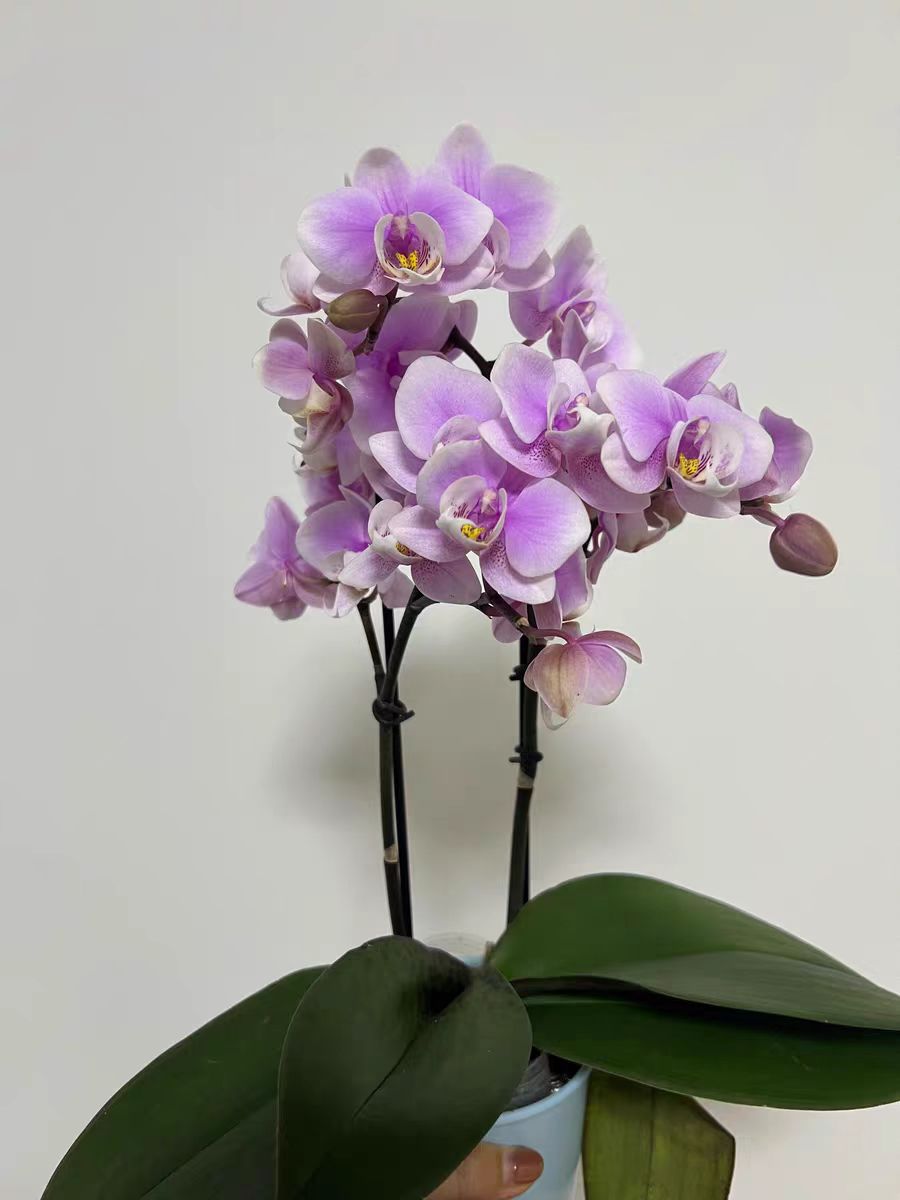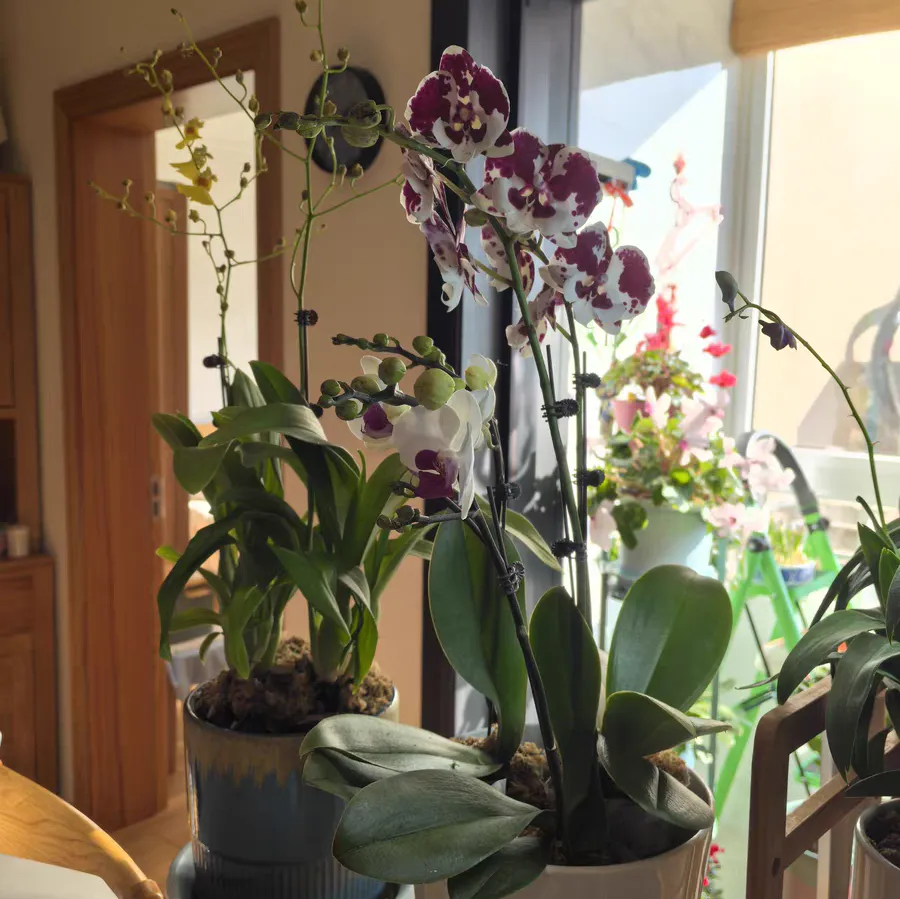Autumn is one of the busiest seasons in the flower market. Various flowers are vying for beauty, attracting countless flower lovers to come and make purchases. However, after buying their favorite flowers, many flower lovers can't wait to change them into more beautiful flowerpots. But it should be noted that there are several types of flowers that should never be repotted in autumn. Once repotted, they are likely to face the risks of withering or even dying. Now, let's take a look at which flowers should not be repotted in autumn.
Cymbidium hybridum
Cymbidium hybridum is renowned for its elegant, dignified and magnificent flowers. Autumn is the growth period of Cymbidium hybridum. Repotting at this time will disrupt its original growth environment, causing damage to the roots and thus affecting its normal growth. Therefore, it is recommended that flower lovers place the purchased Cymbidium hybridum in a suitable environment for cultivation and wait until next spring to carry out the repotting operation. This can not only ensure the healthy growth of Cymbidium hybridum but also avoid the risks brought by repotting.
Kalanchoe blossfeldiana
Kalanchoe blossfeldiana gets its name because of its auspicious meaning and long flowering period. Autumn is the bud-forming period of Kalanchoe blossfeldiana. Repotting at this time will seriously affect the development of its buds and even cause the buds to fall off. Therefore, after buying Kalanchoe blossfeldiana in autumn, flower lovers should place it in a place with good ventilation and sufficient sunlight for cultivation and avoid the repotting operation. Wait until the flowering period of Kalanchoe blossfeldiana ends, and then carry out repotting or pruning according to the actual situation.
Schlumbergera truncata
Schlumbergera truncata is loved by flower lovers for its unique crab-claw-shaped leaves and bright flowers. Autumn is the growth period and bud-forming period of Schlumbergera truncata. Repotting at this time will damage its roots and affect its absorption and utilization of nutrients. Therefore, after buying Schlumbergera truncata, flower lovers should patiently wait for it to pass through the growth period and bud-forming period, and wait until the temperature is suitable in next spring or autumn to carry out the repotting operation. Meanwhile, during the cultivation process, attention should be paid to keeping the soil moist and ensuring sufficient sunlight.
Jasminum sambac
Jasminum sambac is loved by people for its fresh fragrance and white flowers. Autumn is the late growth period and early dormancy period of Jasminum sambac. Repotting at this time will cause great harm to it. Because the roots of Jasminum sambac are relatively fragile and are easily damaged during the repotting process. So, after buying Jasminum sambac, flower lovers should place it in a place with good ventilation and suitable sunlight for cultivation and avoid the repotting operation. Wait until the temperature warms up in next spring to carry out repotting or pruning.
Phalaenopsis
Phalaenopsis is highly sought after by people for its elegant flowers and unique shapes. Autumn is the growth period and flowering period of Phalaenopsis. Repotting at this time will cause serious harm to it. Because the roots of Phalaenopsis have extremely high requirements for the soil environment, once repotting, it is easy to cause damage to its roots or even death. So, after buying Phalaenopsis, flower lovers should place it in an environment with good ventilation, suitable sunlight and relatively high humidity for cultivation and avoid the repotting operation. Meanwhile, during the cultivation process, attention should be paid to regular watering and fertilizing to ensure its healthy growth.
For those plants that are not suitable for repotting in autumn, we need to take some special cultivation measures to ensure that they can safely pass through this season.
Reduce the watering frequency: The temperature gradually decreases in autumn, and the growth speed of plants will slow down, so their demand for water will also decrease. Avoid overwatering to prevent root rot.
Maintain a suitable temperature: Plants that are not suitable for repotting in autumn are usually more sensitive to temperature changes. Therefore, place them in an environment with stable temperature and good ventilation to avoid damage to the plants caused by excessive temperature differences.
Apply fertilizers appropriately: Autumn is an important period for plants to accumulate nutrients. For those plants that are not suitable for repotting, some fertilizers containing phosphorus and potassium elements can be applied appropriately to enhance their cold resistance.
Avoid touching the roots: During the cultivation process in autumn, try to avoid touching or turning over the roots of plants to prevent damage to the roots and affect their normal growth.
By taking the above measures, we can help those plants that are not suitable for repotting in autumn safely pass through this season and lay a solid foundation for their healthy growth in the next year.
The five types of flowers, namely Cymbidium hybridum, Kalanchoe blossfeldiana, Schlumbergera truncata, Jasminum sambac and Phalaenopsis, should never be repotted in autumn. After buying these flowers, flower lovers should place them in a suitable environment for cultivation to avoid the risks brought by repotting. Meanwhile, during the cultivation process, attention should be paid to keeping the soil moist, ensuring sufficient sunlight and good ventilation to ensure the healthy growth and beautiful blooming of these flowers.
Which plants are not suitable for repotting in autumn?

Share with
Tagged in :




Leave a Reply